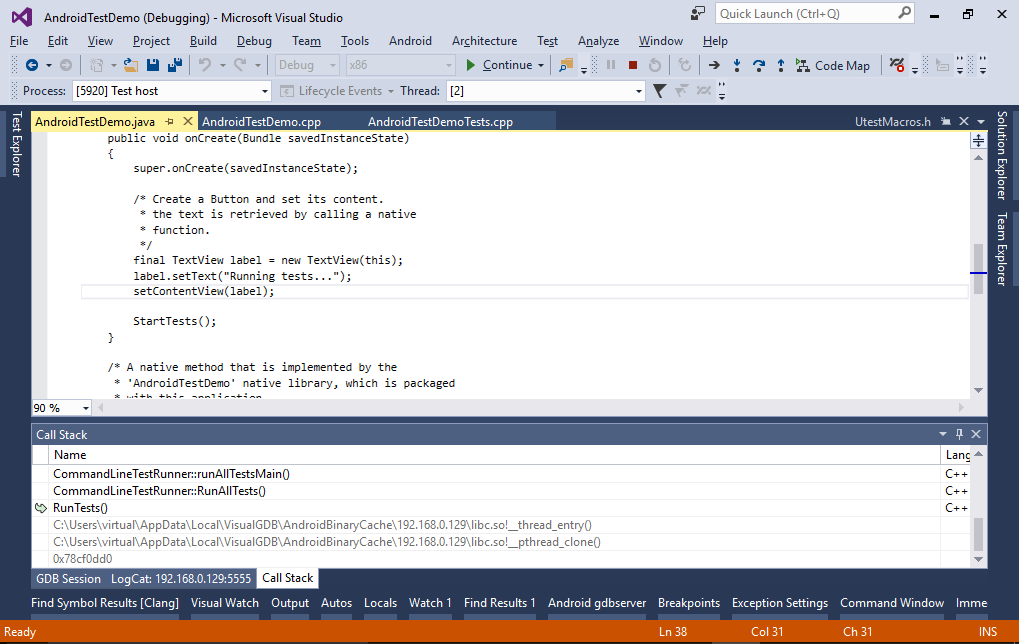Running C++ Unit Tests on Android devices
This tutorial shows how to run C++ unit tests on your Android devices. We will create a basic unit test based on the CppUTest framework that will check that the device has an accelerometer.
Before you begin, install VisualGDB 5.2 or later.
- Start Visual Studio and open the VisualGDB Android Project Wizard:
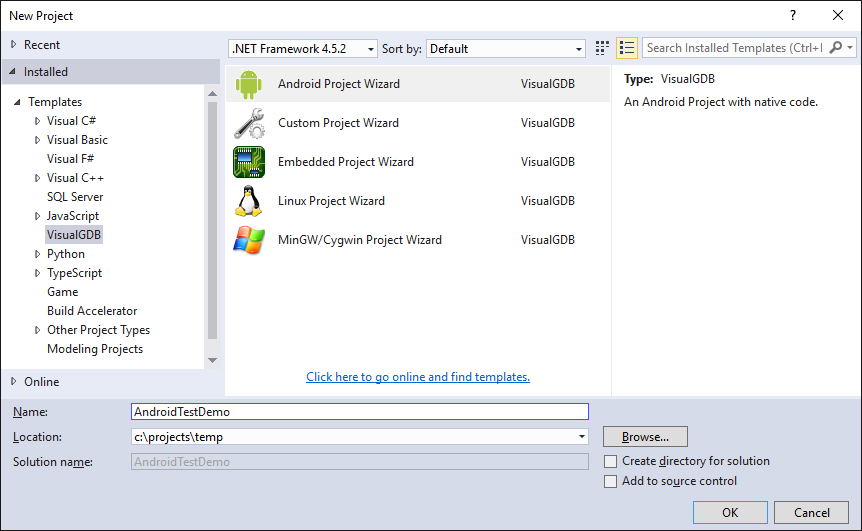
- On the first page of the wizard select “Create a unit test project” and pick a framework. VisualGDB supports CppUTest and Googletest out-of-the-box and provides an extensibility interface to support any other 3rd-party framework:
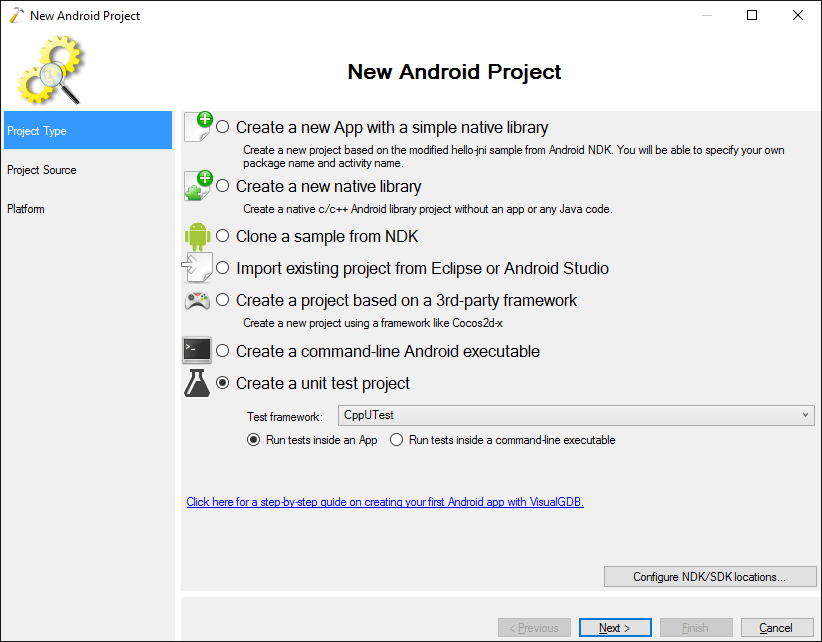 Normally VisualGDB will create Java app with C++ code that will run the unit tests inside a separate thread. If you don’t need the App context, you can select “Run tests inside a command-line executable” to create a stand-alone command-line Android binary.
Normally VisualGDB will create Java app with C++ code that will run the unit tests inside a separate thread. If you don’t need the App context, you can select “Run tests inside a command-line executable” to create a stand-alone command-line Android binary. - Proceed with the default settings on the “Project Source” page:
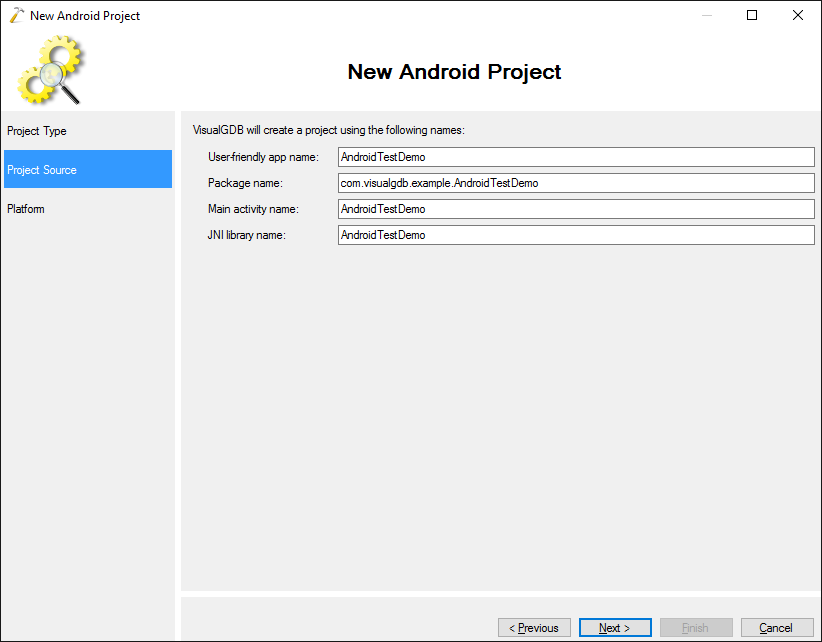
- On the last page of the wizard select the platform you would like to target and the hardware platforms:
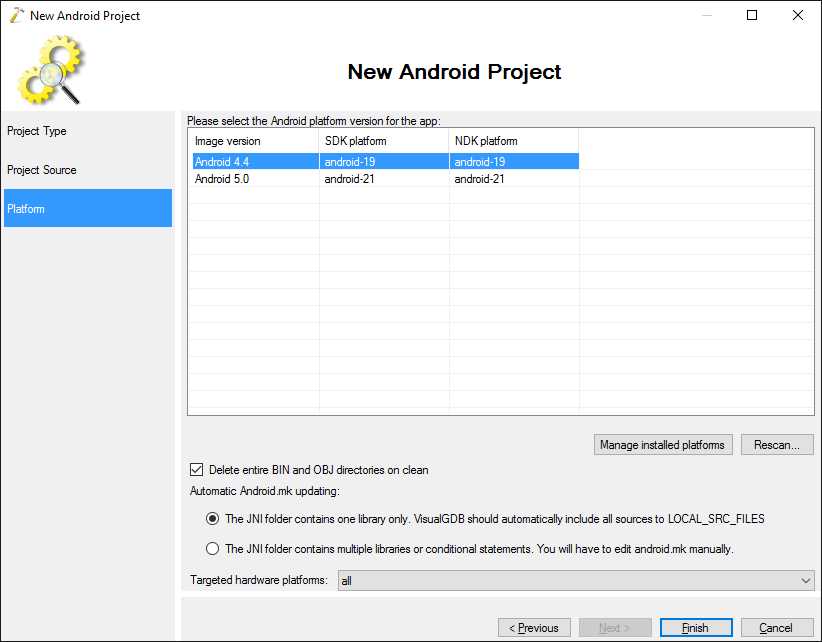
- Press “Finish” to generate the project. Build it with Ctrl-Shift-B and open the Test Explorer to see the example unit tests detected by Visual Studio:
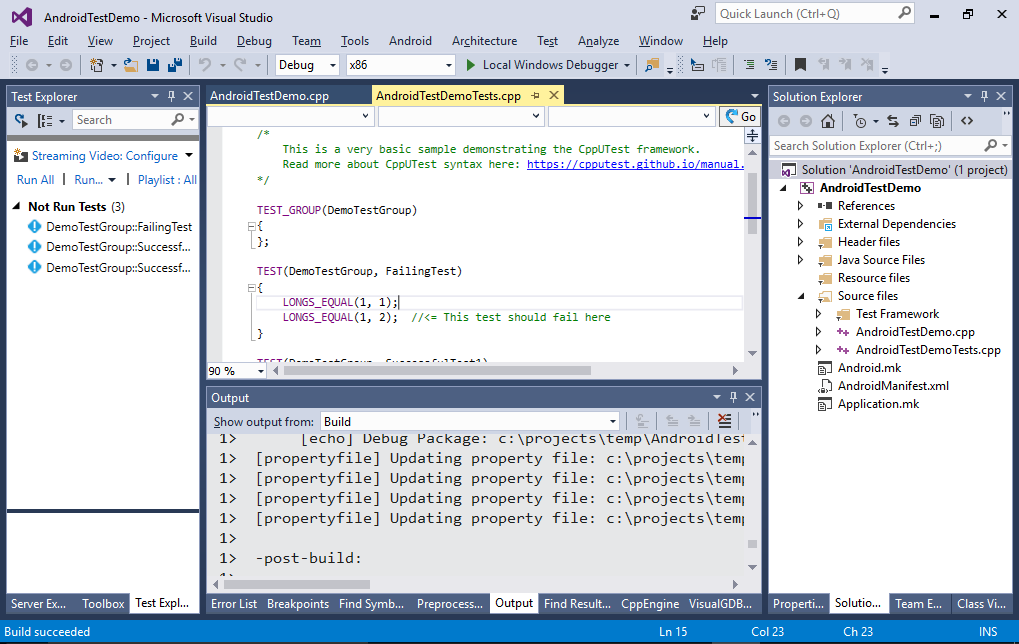
- Select Test->Run All to launch them on your device. The FailingTest should immediately fail, while the others should succeed:
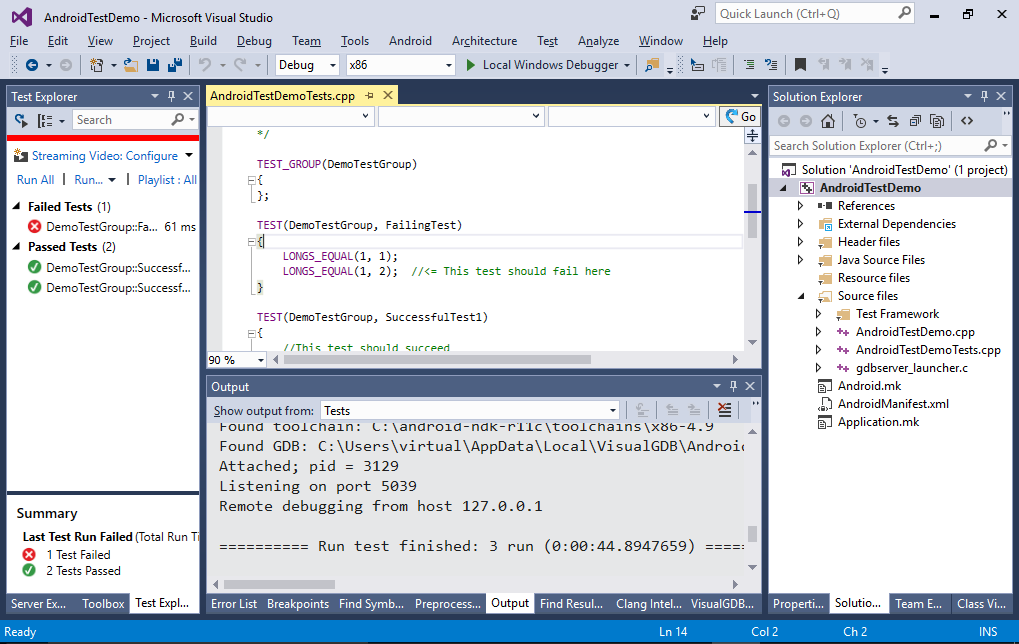
- Now we will add a basic tests that ensures that your device has an accelerometer. Replace the code in the tests file with the following:
#include <CppUTest/CommandLineTestRunner.h> #include <stdio.h> #include <android/sensor.h> TEST_GROUP(HardwareTests) { }; TEST(HardwareTests, AccelerometerTest) { ASensorList sensorList; ASensorManager* sensorManager = ASensorManager_getInstance(); CHECK(sensorManager); int n = ASensorManager_getSensorList(sensorManager, &sensorList); bool accelerometerFound = false; for (int i = 0; i < n; i++) { const ASensor* sensor = sensorList[i]; if (sensor == NULL) continue; if (ASensor_getType(sensor) != ASENSOR_TYPE_ACCELEROMETER) continue; const char* name = ASensor_getName(sensor); const char* vendor = ASensor_getVendor(sensor); printf("Found accelerometer: %s %s\n", vendor, name); accelerometerFound = true; } CHECK(accelerometerFound); }
- Add “-landroid” to the System Library Names field in VisualGDB Project Properties so that your project can use the ASensor_xxx() functions:
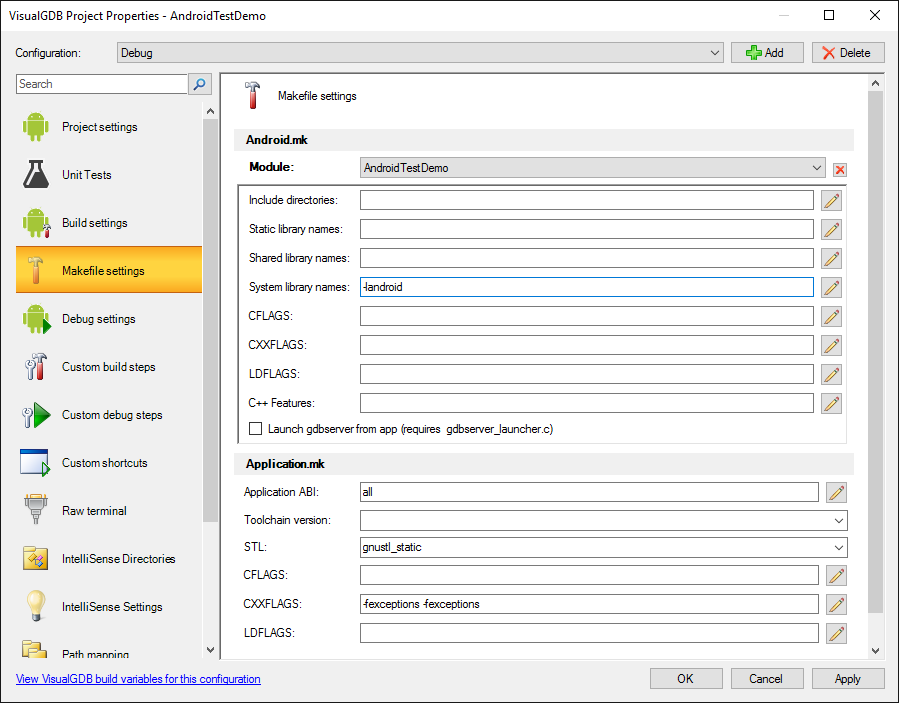
- Build the project. The Test Explorer window will show the newly added test:
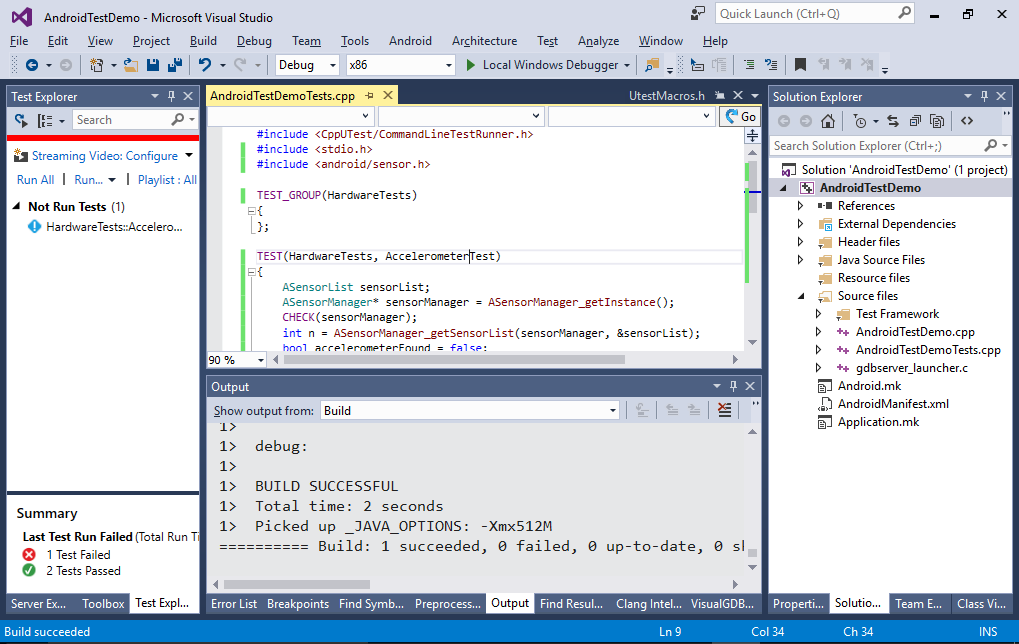
- Start it via Test->Run All Tests or by right-clicking on it and selecting “Run Selected Tests”:
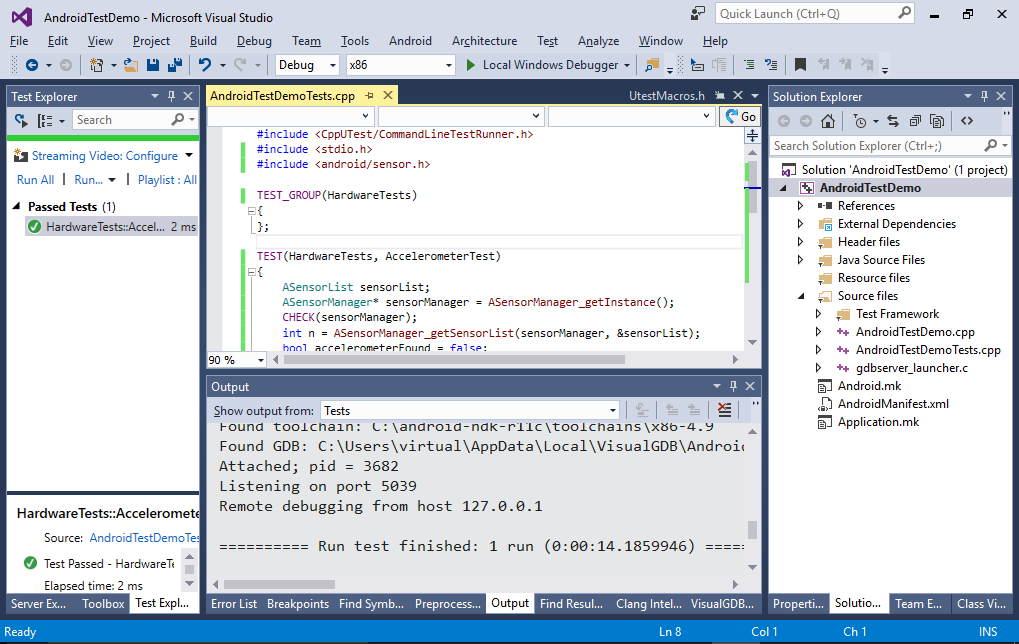
- If your device has an accelerometer, the test should succeed. If it does not, you can easily debug it by right-clicking on it in Test Explorer and selecting “Debug selected tests”:
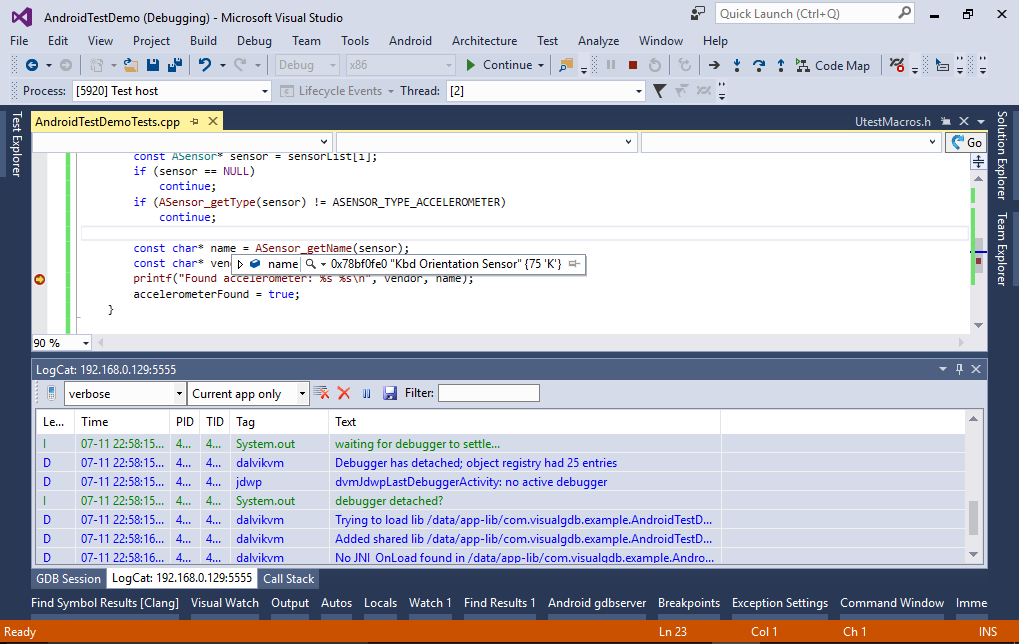
- You can use the Call Stack window to understand the context in which the test is run. VisualGDB creates a separate thread using the pthread_create() function and passes control to the CppUTest framework. VisualGDB automatically selects the tests to run and interprets the information about successful and failed runs:
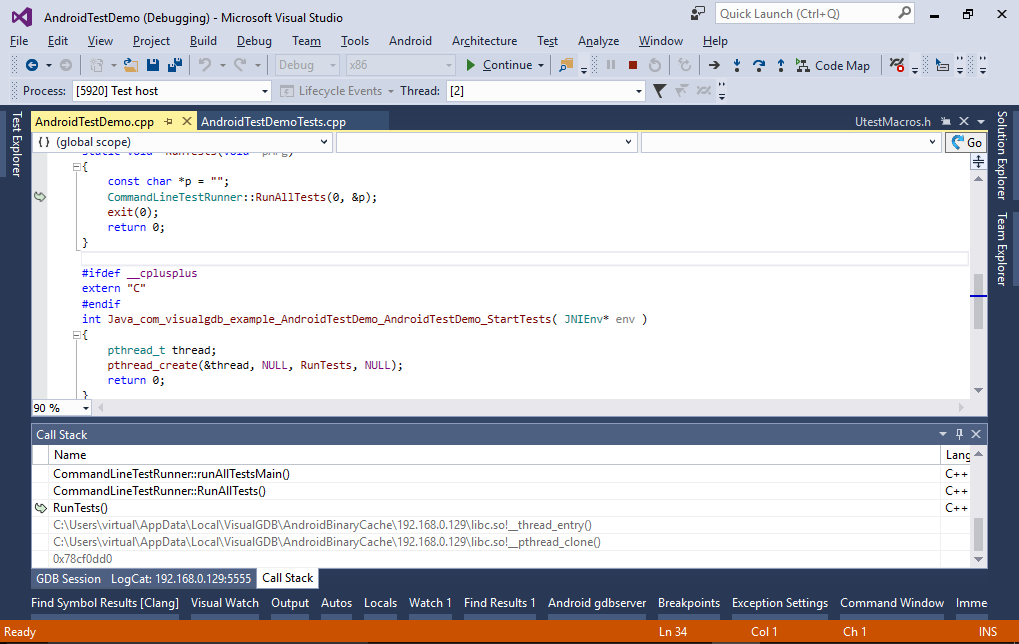
- VisualGDB also generates a very basic Java source file that creates a simple activity and invokes the StartTests() function so that the native tests can be started:
